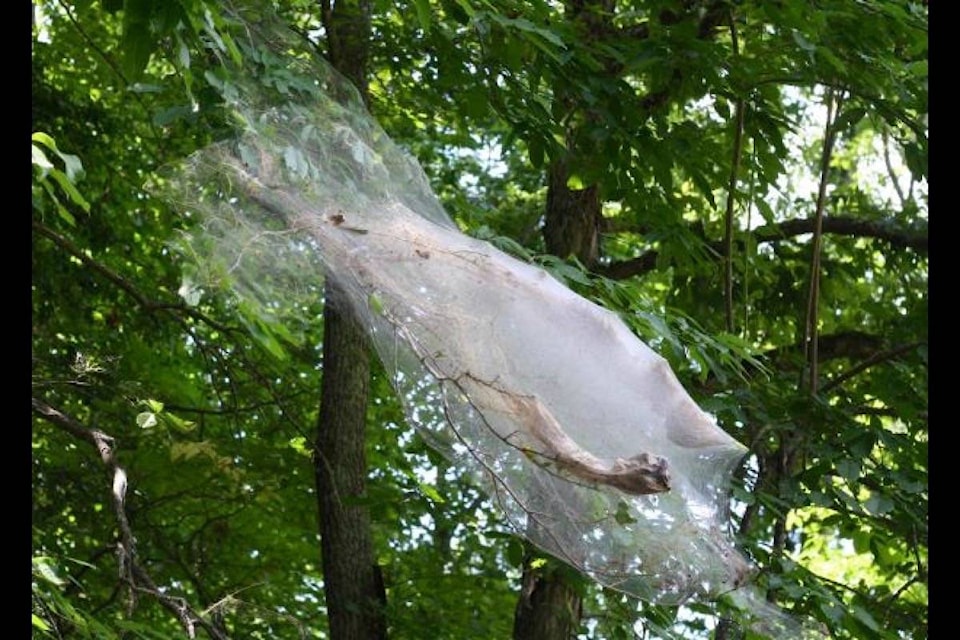The webbed nests that are increasingly seen on trees in the Cowichan Valley recently are likely the result of a moth species called the fall webworm, not tent caterpillars.
Provincial forest health officer Tim Ebata said the fall webworm’s nests resemble the more familiar nests from tent caterpillars that are common in the area during some spring seasons, but, as the name suggests, the fall webworm makes nests in the late summer and early fall.
“It’s more of a nuisance than anything, and not a big deal,” Ebata said.
“They flair up occasionally if the conditions are right, but it rarely takes over a whole tree and is not usually a serious killer of the trees where the nests are made.”
The fall webworm is a moth in the family Erebidae known principally for its larval stage, which creates the characteristic webbed nests on the tree limbs of a wide variety of hardwoods in the late summer and fall.
The moth is native to North America, ranging from Canada to Mexico.
The species acts similarly to the tent caterpillar, but the fall webworm constructs its nest over the end of the branch rather than where limbs meet.
The large, conspicuous webs typically contain caterpillars, dead partially eaten leaves, and fecal droppings.
Bernie Dinter, owner of Duncan’s Dinter Nursery, said he has seen the tell-tale signs of caterpillar-nest infestations on a number of alder trees near the nursery, but assumed it was tent caterpillars.
“Tent caterpillars usually show up in five to seven year cycles, so we’re about due now,” Dinter said.
“The defoliation from these nests can weaken the tree but, in this case, it’s late in the season and the leaves will start falling anyway in a few weeks, so I expect it will have a lot less impact than if the nests were formed in the spring.”
Ebata said if people are concerned about fall webworm nests in their trees, they can be snipped off and burned.
But Ebata suggested that, with fire bans still in place in the Valley, the best solution right now would be to simply crush the nest once it is snipped from the tree.
“You don’t want to touch the caterpillars as they can be irritating to the skin,” he said.
“The insects are usually in the nest during the evenings. If you take one down and find no caterpillars, they have likely moved on to pupate to become moths.”



